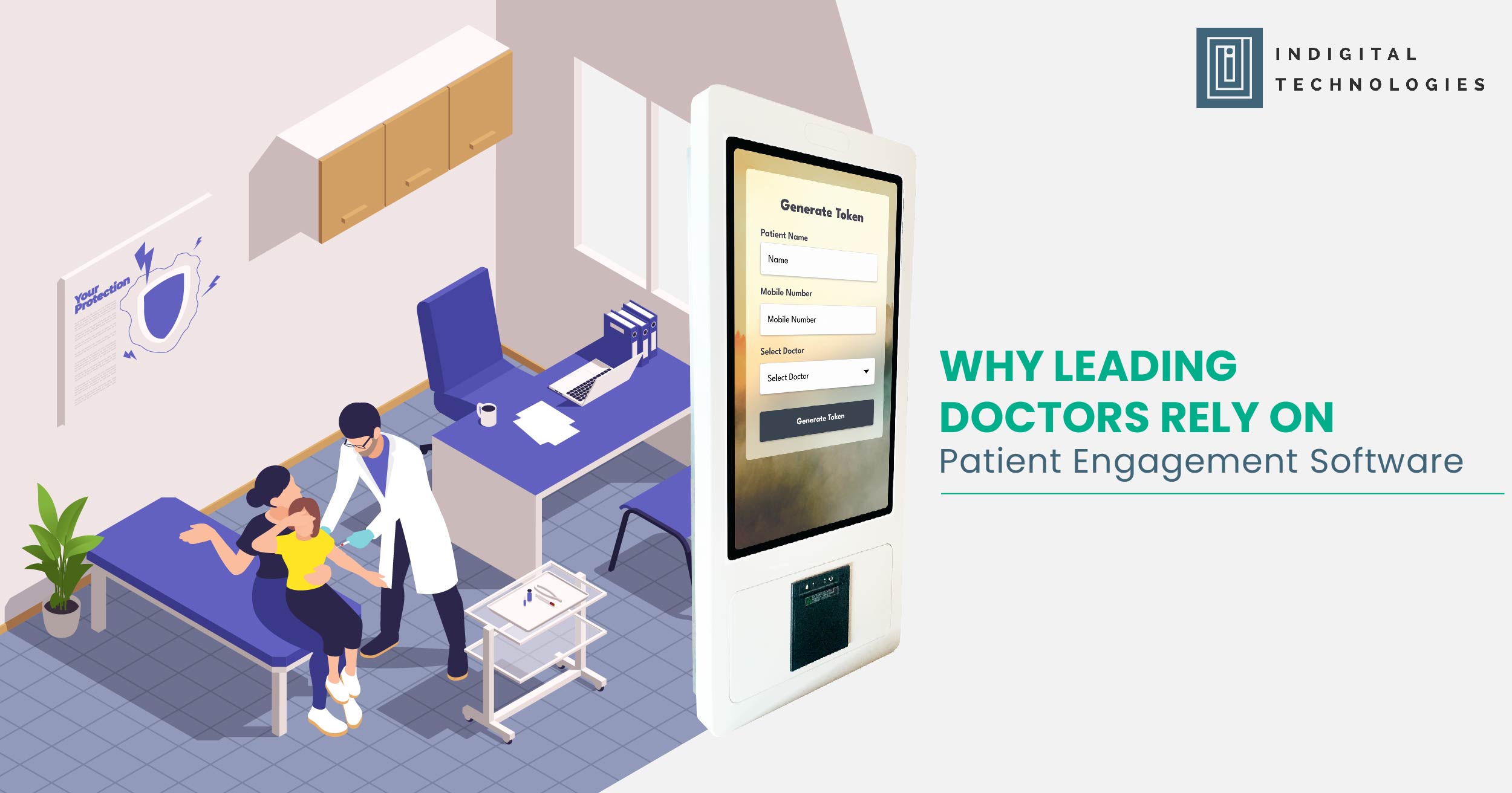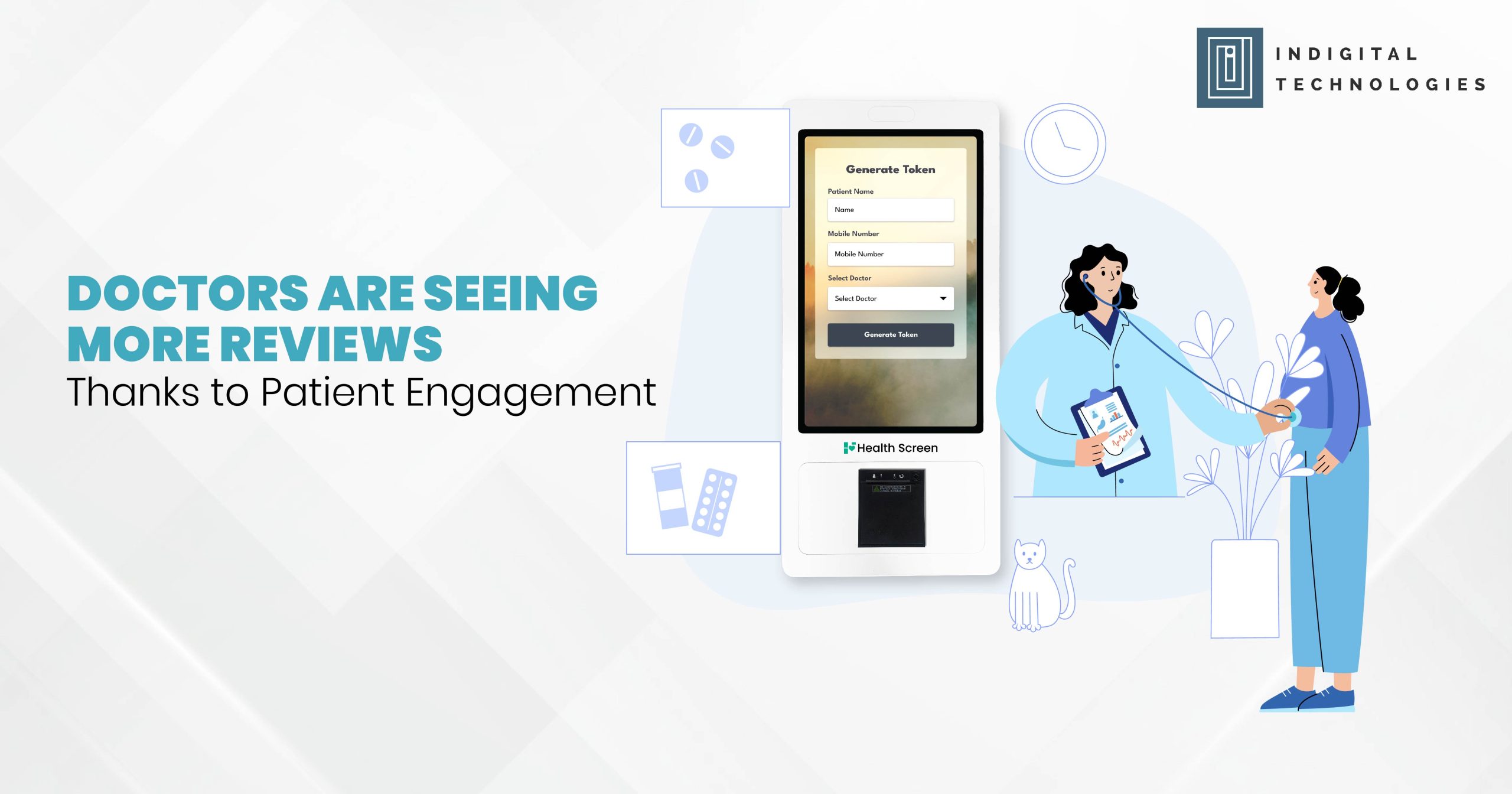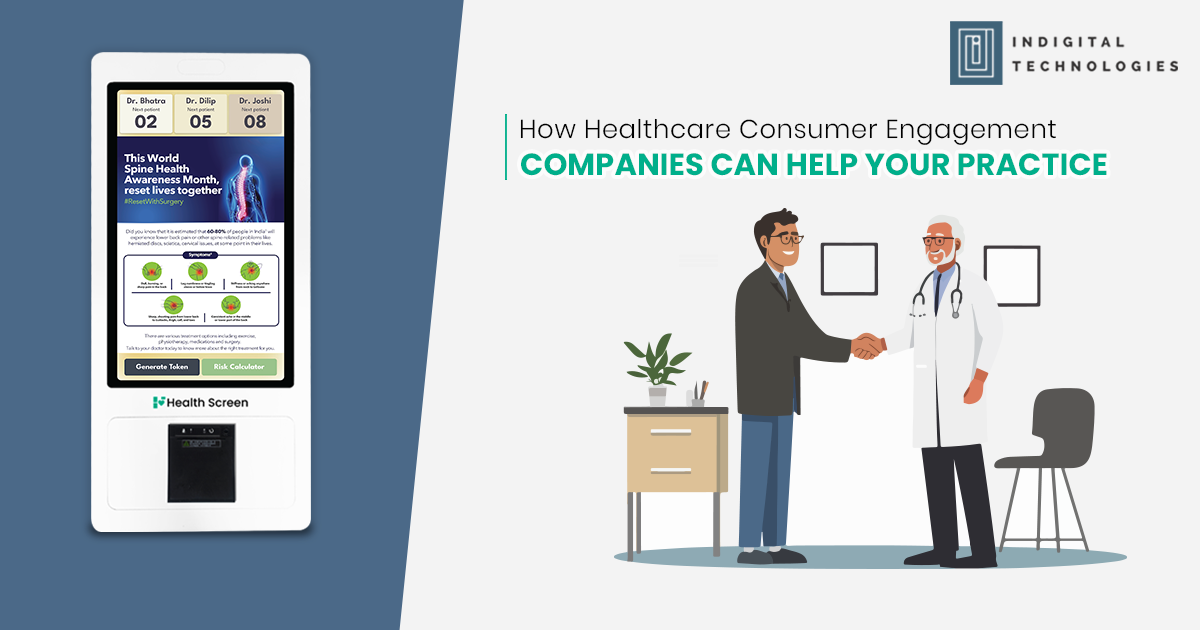In an era where patient expectations are evolving rapidly, leading doctors aren’t just relying on their clinical expertise—they’re upgrading their practice with digital tools that enhance communication, boost operational efficiency, and strengthen patient relationships.
At the center of this transformation is patient engagement software—a category of tools that’s helping doctors deliver smarter, faster, and more satisfying care.
But why are the most successful doctors embracing these platforms? And what can pharma managers learn from this shift?
The Doctor’s Daily Challenge
Let’s consider a typical OPD setup: crowded waiting rooms, confused patients, repetitive counseling, and limited time per consultation. It’s a balancing act between clinical work and patient interaction.
Patient engagement software steps in to ease that burden.
Whether it’s a token-based queue system, a health content screen in the waiting area, or a dual-display tool for visual counseling—these platforms help doctors manage patient expectations and improve communication without adding to their workload.
What Do Leading Doctors Gain?
- Time Efficiency
Token systems digitize patient flow, eliminating guesswork and reducing crowding. Doctors no longer need to manage queues manually, allowing them to see more patients in less time. - Stronger Patient Communication
Visual content—such as 3D anatomical models, lifestyle tips, and therapy explanations—makes complex conditions easier to explain. Patients understand better, ask smarter questions, and feel more confident in their treatment. - Improved Therapy Adherence
When patients know the ‘why’ behind a prescription or lifestyle change, they’re more likely to follow through. Doctors who integrate educational tools see better compliance and fewer repeat queries. - Reputation Boost
A digital clinic is a progressive clinic. Patients perceive doctors who use engagement platforms as more modern, trustworthy, and thorough.
The Pharma Perspective: Partnering in Progress
Pharma brands have a unique opportunity here. By supporting these platforms—either through co-branded content, educational assets, or implementation support—they can position themselves as enablers of better healthcare.
For example:
- A pharma-sponsored screen showing daily skin care routines for psoriasis can educate while subtly reinforcing brand presence.
- A QR code on an OPD slip can lead to a branded patient education video—making your therapy more relatable and trusted.
- A waiting area system providing general health scores can link back to awareness content around chronic conditions your product addresses.
These aren’t ads. They’re experiences. And they build brand equity without the hard sell.
Real Impact, Not Just Digital Flash
The most effective systems aren’t just flashy—they’re functional. They blend into the clinic’s natural workflow, serving both patient and doctor without disruption.
Think of a system that:
- Notifies patients of their turn
- Shows therapy-related videos while they wait
- Lets doctors visually explain disease mechanisms
- Offers take-home content via SMS or WhatsApp
- Collects patient feedback after consultations
Such platforms improve healthcare delivery, and any brand supporting them becomes a part of that better experience.
For Doctors and Pharma Managers Alike: The Digital Shift Is Here
Doctors are no longer asking if they should digitize their practice—they’re choosing how best to do it. Patient engagement software is no longer a trend; it’s becoming the norm.
Pharma leaders who embrace this reality are positioning their brands where the trust is built—inside the clinic, alongside the doctor, and in front of the patient.
Conclusion: Leading Means Evolving
The doctors ahead of the curve are doing more than prescribing—they’re engaging. And the pharma brands they trust most are those who help them do that better.
By aligning with the right tools, you don’t just support a clinic—you become part of its growth story.





